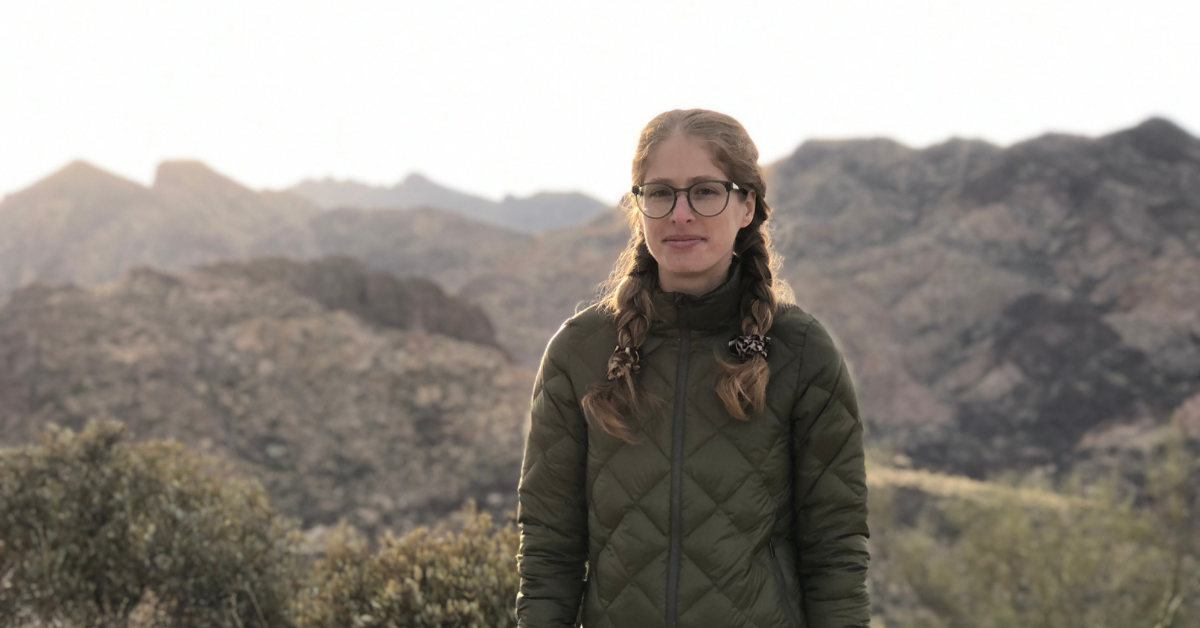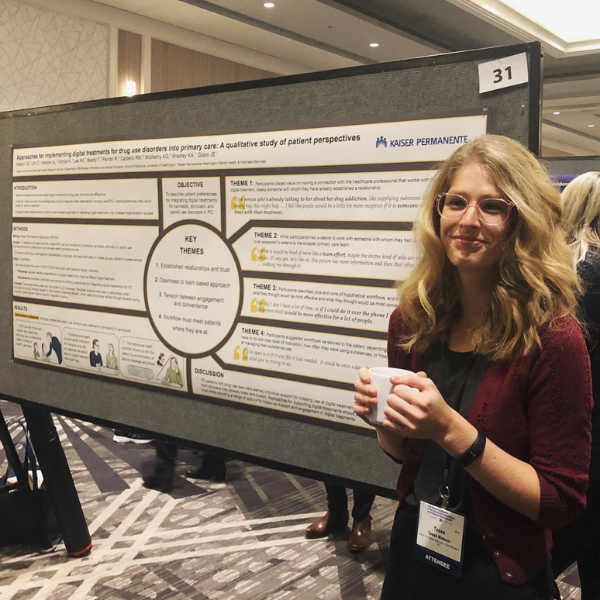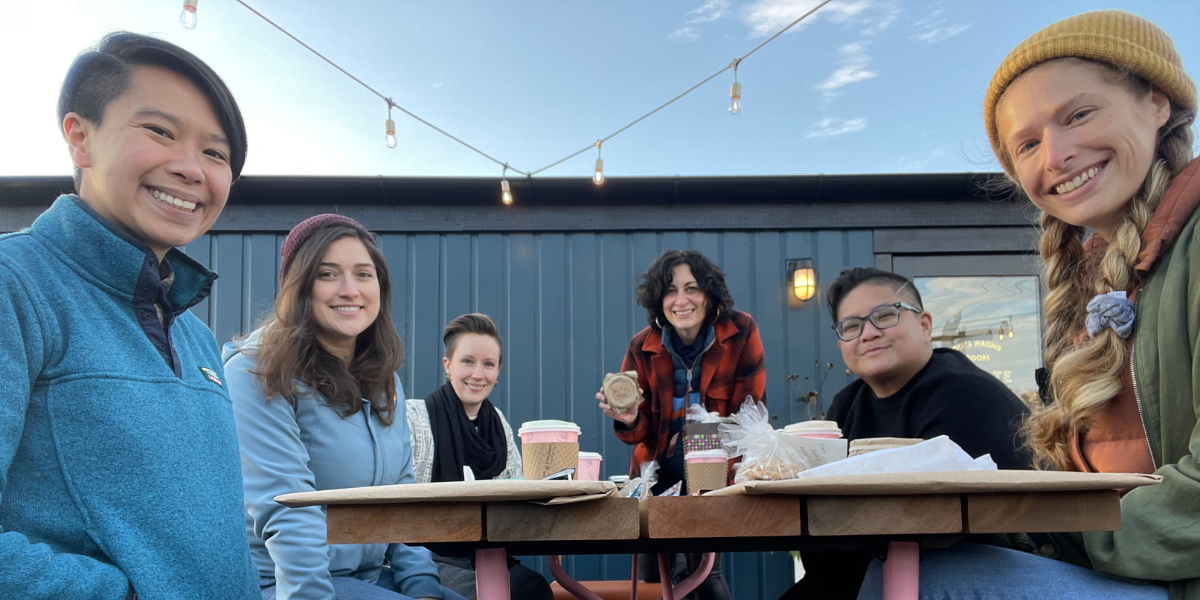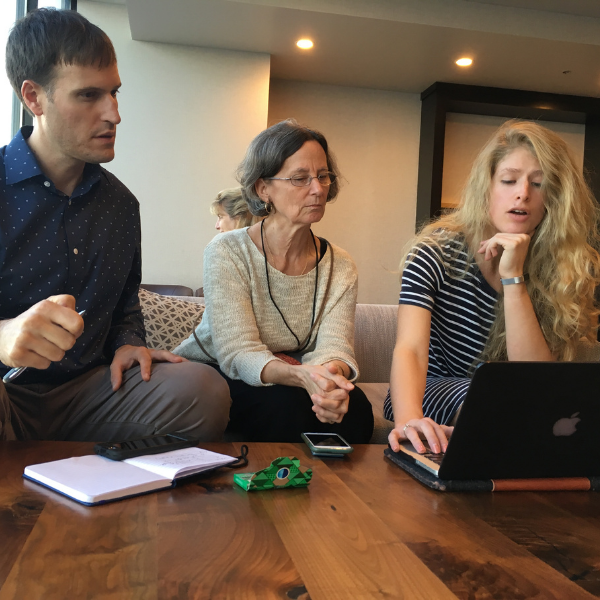
When people think of addiction, they may be used to thinking in binaries: Someone is addicted to a substance or they are not. Someone is committed to becoming sober or they haven’t accepted their addiction. Someone is in rehabilitation or they’re not receiving any treatment.
But not only are these binaries around addiction inaccurate, they are stigmatizing and don’t leave room for understanding the broad spectrum of substance use disorders and the wide array of treatment options for people with these health challenges.
Tessa Matson, a doctoral student at the University of Washington School of Public Health, has spent the past four years studying and researching screening and assessment tools for substance use disorders that are patient-centric, equitable, and recognize the complexity that comes with motivating people to change their behaviors. Her work has led to tools that her mentors say are hugely important for people with substance use disorders.
For her academic excellence and commitment to public health, Matson received the 2022 Gilbert S. Omenn Award for Academic Excellence, the most prestigious, School-wide recognition for graduate students.
“Tessa’s curiosity and innovation, combined with her outstanding intellect, will make her a leader in the field of public health,” said Katharine Bradley, affiliate professor of Health Systems and Population Health and Medicine and senior investigator at Kaiser Permanente Washington Health Research Institute. “Moreover, she is addressing some of the greatest public health challenges of our time: increasing opioid and cannabis use disorder, and other substance use.”

For her dissertation, Matson has been researching measurement-based care for cannabis use disorders in a primary care setting. This is increasingly important as cannabis becomes legal and more accessible across states and as primary care providers lack validated tools to identify cannabis use disorders.
“Her studies are certain to be high profile and to change the way cannabis use disorder is identified and treated in primary care for ages to come,” said Emily Williams, professor and doctoral program director in the Department of Health Systems and Population Health. “Few doctoral students will have such clinical impact resulting from their dissertation work.”
Impact has been a driving motivator behind Matson’s interest in studying substance use disorders. She’s combined a love of research and science with the personal experience of having a partner who experienced a substance use disorder. Her empathy and willingness to learn from an array of experts around her in the field guides the work she does.
During her time at UW, she’s been widely published and secured funding for her research. Currently, she has 26 publications, six of which she is the first author on. Matson received four years of funding to work as a predoctoral fellow at the VA Puget Sound Health Care System and has been a research interventionist at Kaiser Permanente Washington Health Research Institute.
Matson studied psychology in undergrad at Whitman College, and applied to Ph.D. programs immediately after, but didn’t get in. So after graduating, she participated in AmeriCorps, coordinating free medical and mental health care at a trauma-informed school-based health center that sought to meet the needs of at-risk students who were disconnected from more traditional health services. Later, she volunteered at a psychiatric hospital in Morocco, coordinating programs and activities for patients. It was there she realized the important role health systems and structures (or the lack thereof) had on population health, which inspired her to go back to school for public health.
"When we consider mental health or addiction from a public health perspective, we are thinking not just about the individual but about the broader systems and structures — the policies and practices, neighborhoods and communities, schools and health systems that interact and produce mental health and substance use disorders — often disproportionately in the population,” Matson said. “We're also thinking about how these systems and structures impact access to care.”

Matson’s research has been centered around how to get practical tools for screening and assessing substance use disorders into the hands of primary care providers. A patient may come in to see the doctor because they are in pain, but through routine population-based screening for behavioral health conditions, including substance use, they may find that pain is actually linked to a larger mental health or substance use disorder that would have otherwise gone undetected.
“We’ve already seen how integrating addiction health services into primary care through screening and assessments can make a huge difference in terms of identifying people,” Matson said.
Pairing validated tools that help providers identify risk and determine severity of substance use disorders with evidence-based and patient-centered treatment can also help address binary thinking on what addiction is and how it can be cared for. These include brief interventions that use motivational interviewing to elicit reasons a patient may want to make a change, to medications that help reduce cravings, to peer-support groups with or without religious affiliations, to cognitive behavioral therapy with a therapist, social worker, or delivered through a digital app.
Whether it’s cannabis or alcohol, the boundary between use and disorder is not a line, but a spectrum, Matson said. Making this kind of dialogue more commonplace can then help stigmas around addiction, which prevent people from seeking care.
“People may delay or never get treatment because of stigma, either because it’s internalized or they fear judgment or consequences from other people,” Matson said. “That makes it so much harder.”

Eliminating stigma is closely tied to health equity. Structural racism and policies like the War on Drugs disproportionately criminalized Black and Hispanic populations. Today, this can mean that communities of color continue to face additional barriers to treatment for substance use disorders, even when that substance is legal, Matson said.
Understanding how substance use disorders land unequally across society has been part of Matson’s research, especially through her work at the VA Puget Sound Research & Development, studying treatment for transgender veteran patients. Matson recently had a paper accepted in the Journal of Substance Abuse Treatment evaluating the effect a national effort to improve transgender-related care had on receipt of alcohol-related care for transgender veterans with alcohol use disorders.
While Matson has been an avid student of addiction and health disparities, her motivation to constantly learn has driven her curiosity and growth in graduate school. She remembers how hard it was at the beginning of her studies to share a paper with other researchers that would receive extensive editing. But she soon learned how much better her work became from collaboratively working with people of diverse expertise.
“I’m one person on a bigger team that includes mentors and people who are experts in areas that I do not know as much about. They invest tremendous amounts of time and energy to help me. Their feedback is sort of an act of love,” Matson said. “I’ve become a better writer and I've become a better researcher because of it.”
Matson jokes about needing to get another Ph.D. after this one just so she can continue being a student. In her two years as a master’s student and four years as a doctoral student, she’s taken 150 credits. But after Matson completes her Ph.D. this summer, learning will still be central to the work she does as an implementation scientist.
“I’m going into a field where I get to be a lifelong student, even if I’m not actually a student,” Matson said. “That's what research is: it’s continuously learning.